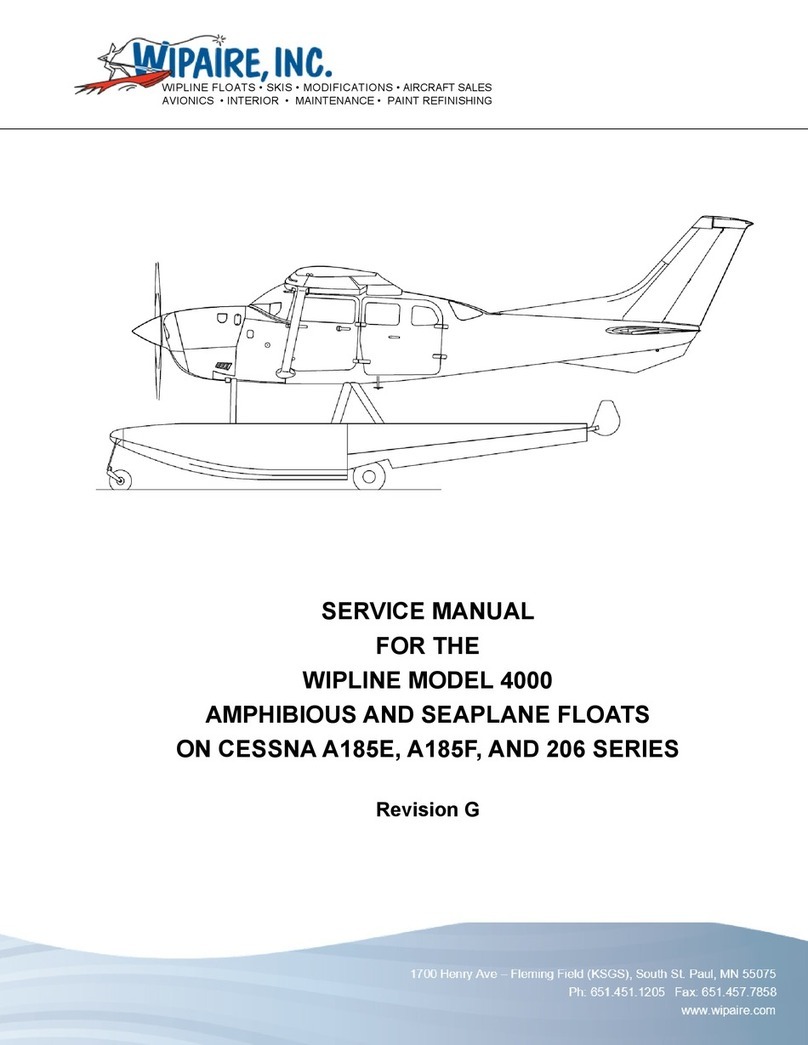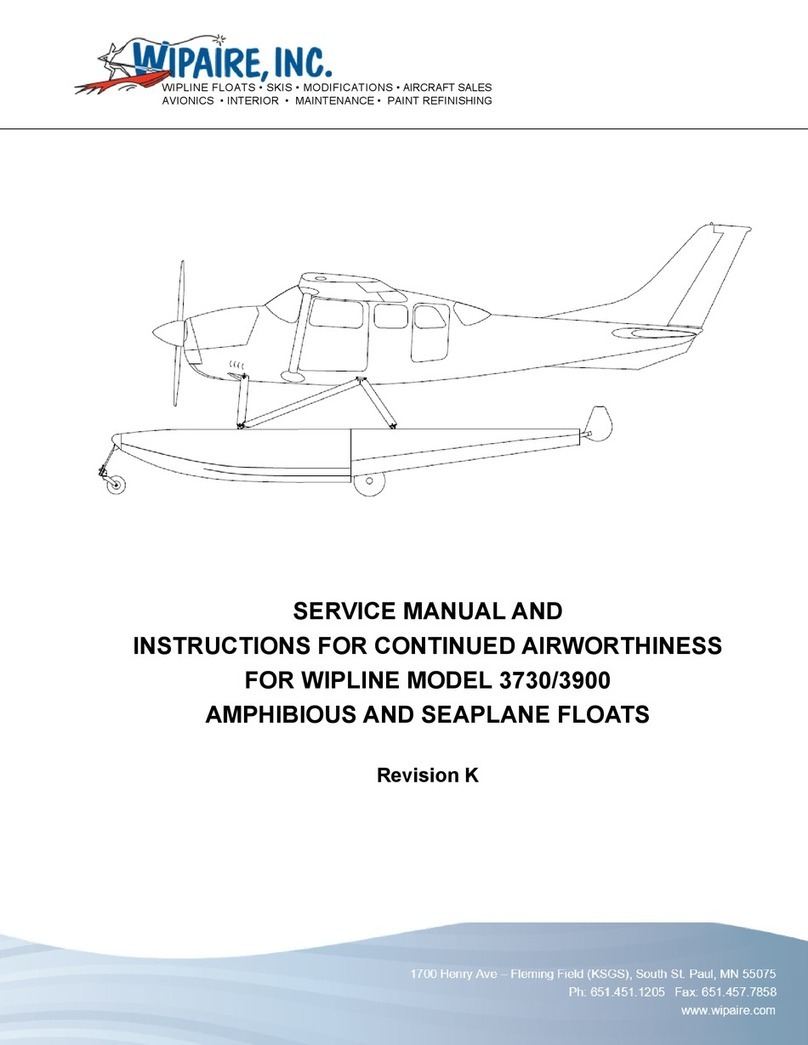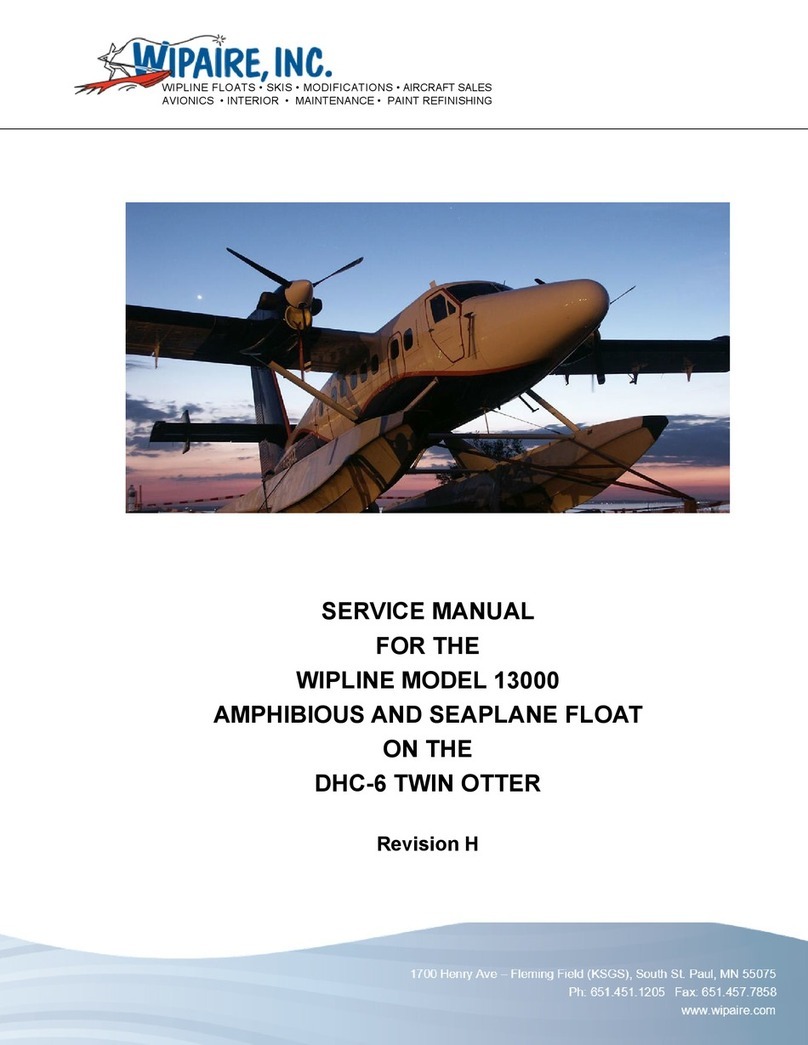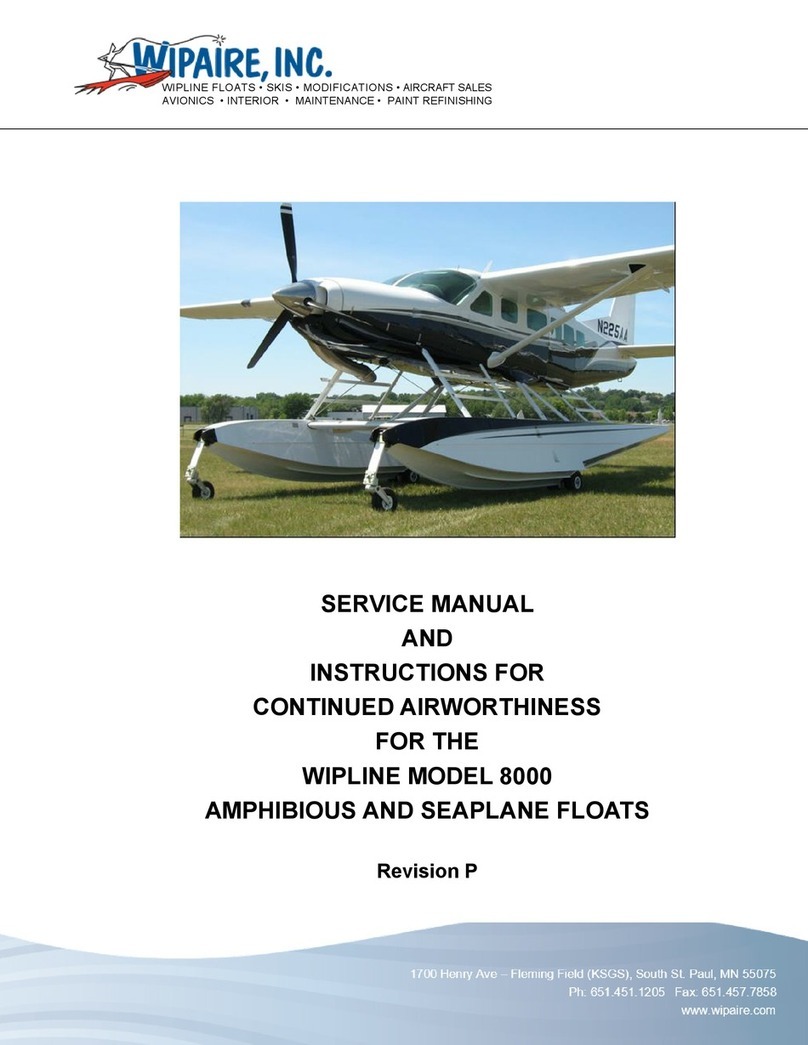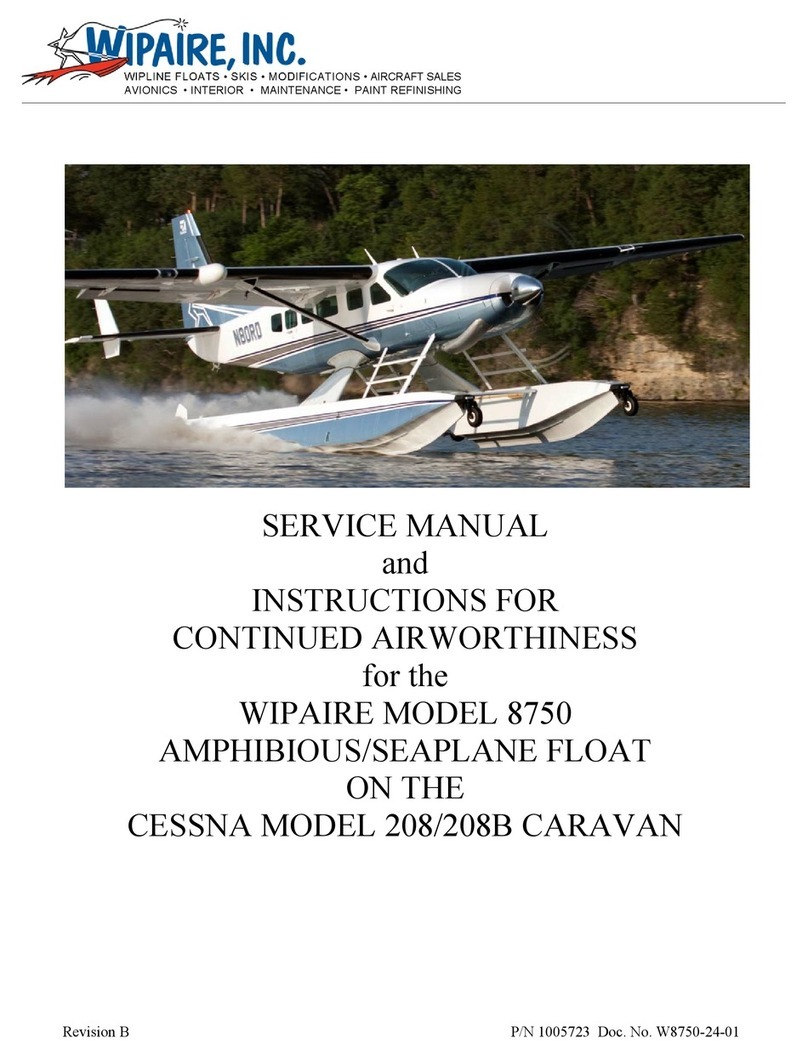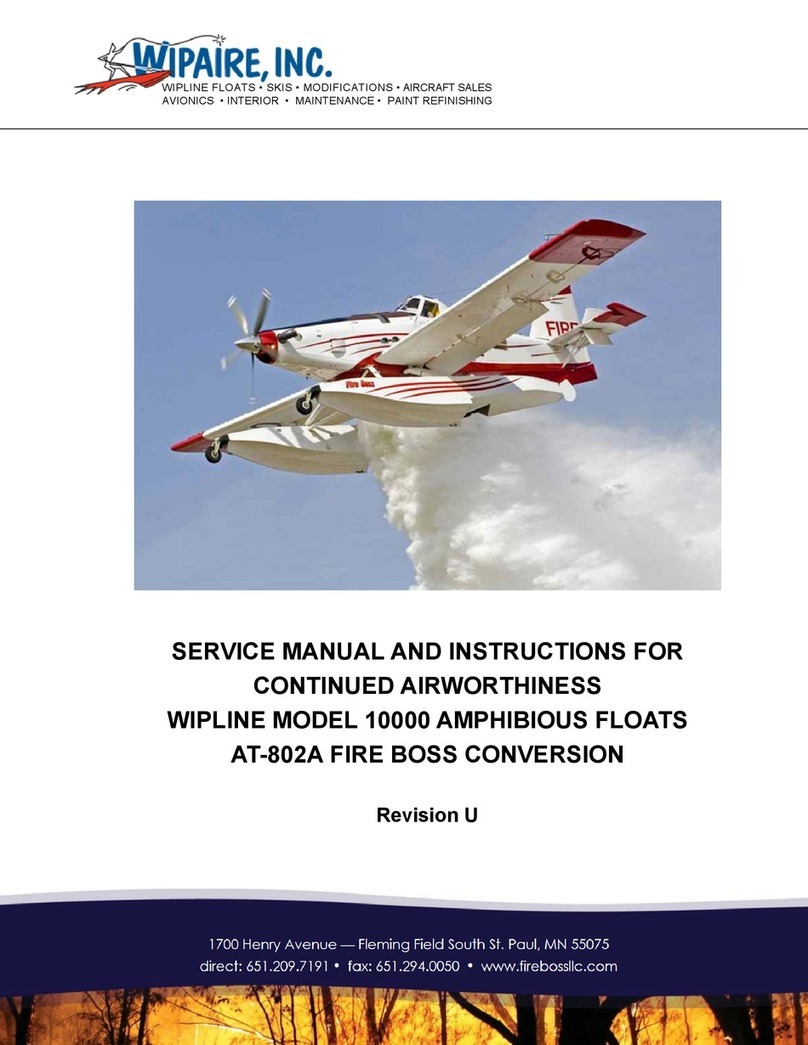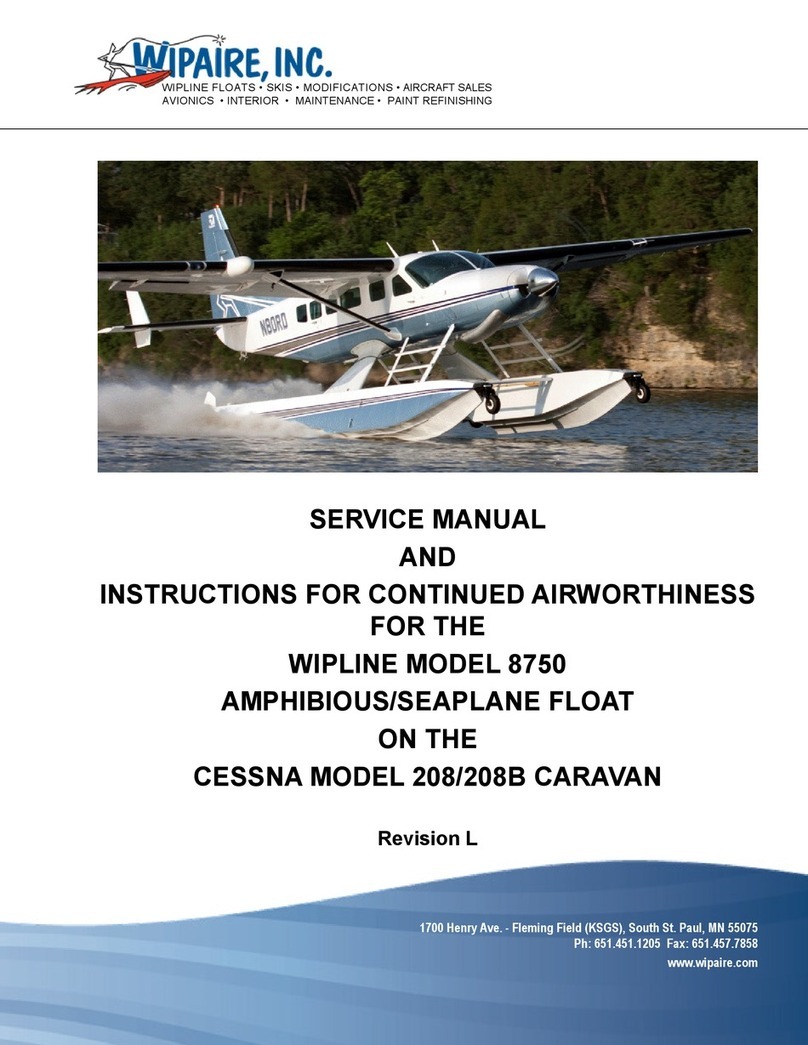
SERVICE MANUAL & ICA
10000 AMPHIBIAN FLOATS ON AIR TRACTOR AT-802
Page 6 Revision W P/N 1003546
LIST OF FIGURES
FIGURE 1.1 JACK CRADLE RECOMMENDED MODIFICATION ........................................................12
FIGURE 1.2 JACKING LOCATION..........................................................................................................12
FIGURE 1.3 FLOAT SECURING LOCATIONS.......................................................................................13
FIGURE 1.4 FLOAT SECURING LOCATIONS OVERVIEW .................................................................14
FIGURE 2.1 SCHEMATIC - HYDRAULIC SYSTEM ..............................................................................31
FIGURE 2.2 SCHEMATIC - ELECTRICAL SYSTEM.............................................................................32
FIGURE 2.3 LAYOUT – MAIN GEAR ......................................................................................................33
FIGURE 2.4 CARRIAGE ASSEMBLY – MAIN GEAR ............................................................................34
FIGURE 2.5 ASSEMBLY – MAIN GEAR SHOCK STRUT .....................................................................35
FIGURE 2.6 ASSEMBLY – MAIN GEAR ASSEMBLY ............................................................................36
FIGURE 2.7 ASSEMBLY – MAIN GEAR DRAG LINK............................................................................37
FIGURE 2.8 ASSEMBLY – MAIN GEAR WHEEL AND BRAKE ............................................................38
FIGURE 2.9 ASSEMBLY – NOSE GEAR BOX AND RETRACTION ....................................................39
FIGURE 2.10 ASSEMBLY – NOSE GEAR LOWER END ......................................................................40
FIGURE 4.1A ASSEMBLY – SCOOPING SYSTEM - COMPLETE .......................................................51
FIGURE 4.1B ASSEMBLY – SCOOPING SYSTEM...............................................................................52
FIGURE 4.2A ASSEMBLY – CYLINDER PROBE JACK........................................................................53
FIGURE 4.2B – PROBE UP POSITION ADJUSTMENT........................................................................54
FIGURE 4.2C – PROBE DOWN POSITION ADJUSTMENT.................................................................54
FIGURE 5.1 SCHEMATIC – PLUMBING – FOAM SYSTEM.................................................................57
FIGURE 8.1 WATER RUDDER STEERING AND RETRACTION SYSTEM ........................................65
FIGURE 10.1 INSTRUMENT PANEL ......................................................................................................70
FIGURE 10.2 INSTRUMENT PANEL (CIRCUIT BREAKER) ................................................................71
FIGURE 11.1 SCHEMATIC – AUXILIARY INSTRUMENT PANEL........................................................75
FIGURE 11.2 SCHEMATIC – CIRCUIT BREAKER PANEL...................................................................76
FIGURE 11.3 SCHEMATIC – ELECTRICAL RETRACT ........................................................................77
FIGURE 11.4 INSTALLATION – FOAM TANKS / PUMPS .....................................................................78
FIGURE 11.5 SCHEMATIC – INSTALLATION – BILGE PUMPS .........................................................79
FIGURE 11.6 SCHEMATIC – INSTALLATION – SCOOP / FILL SYSTEMS.........................................80
FIGURE 11.7 SCHEMATIC – INSTALLATION – PROBE POSITION ..................................................81
FIGURE 11.8 SCHEMATIC – INSTALLATION – PDR 60 AUDIO .........................................................82
FIGURE 11.9 SCHEMATIC – INSTALLATION – ITT / EXCESS POWER LIGHT ...............................83
FIGURE 11.10 SCHEMATIC – INSTALLATION – WATER IN FLOAT SENSORS ..............................84
FIGURE 14.1 EXAMPLE NOSE SPRING CRACK MEASUREMENTS (NOT TO SCALE) .................99
